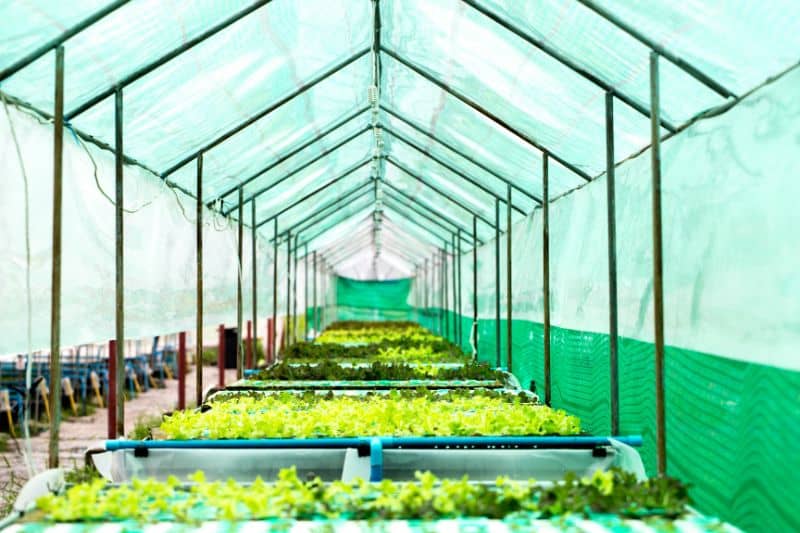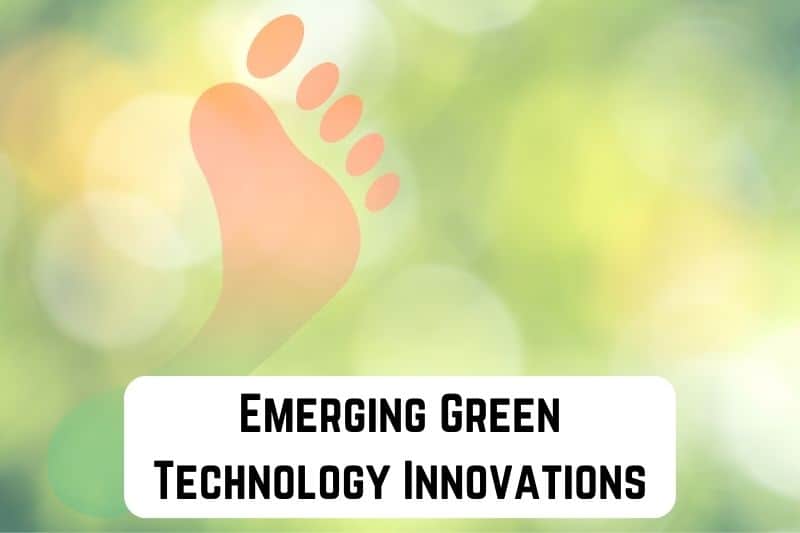With more people becoming more conscious about how their choices impact the environment – and the ecosystem in general – it’s not surprising to see many green technologies emerge in recent times.
From solar-powered trains to fiber solar lighting to the proliferation of electric vehicles, the future looks all bright for green tech. While these technologies are designed to serve many diverse purposes, they all have one overarching goal: to preserve the ecosystem and make Mother Earth a safer place to live.
In this post, we will discuss some of the top emerging green tech innovations that can potentially alter the course of mankind – in a positive way.
We will be reviewing some of these technologies’ practical applications and their potential for the future. Let’s dive right into it.
Read: Is Cotton a Renewable Resource?
Top 11 Emerging Green Technology Innovations
1. Low Carbon Buildings
Did you know that the buildings we live in contribute 38% of all greenhouse gas emissions? Kind of shocking isn’t it? Well, it is actually.
To cut down on this emission, real estate developers are now turning to low-carbon building construction innovation. As the name suggests, this innovation seeks to utilize construction materials with little to no carbon content, notably bamboo and hemp.
While they might come off as fragile to the untrained eyes, these materials are sturdy and can go toe to toe with their carbon-filled counterparts. And best of all, they are eco-friendly.
2. Solar-Powered Trains
In December 2017, Australia launched the first-ever solar-powered train, courtesy of the Byron Bay Railway Company. This was a major milestone in the green tech space, signalling the dawn of a new era.
It also showed the enormous potential of renewable energy and how it can alter the future of travel. Ten years ago, few would have believed that someday trains would run on solar power. Now, it’s a reality.
While this technology might be in the rudimentary stages at the moment, many countries, including the US and China, are making strides to fully develop it. You shouldn’t be surprised to see these trains replace traditional diesel and coal-powered trains in the future.
3. Wind Power
Wind power is another sustainable and renewable source of energy that has been disrupting the industry for decades. While not new, it’s gained a lot of ground these past years and rapidly becoming the renewable energy of choice in many countries.
The reason for this rapid adoption is simple: wind power costs absolutely nothing besides the initial cost of installing and maintaining the wind turbine. On top of that, it has no side effects and doesn’t emit harmful gases to the environment.
Interestingly, wind turbines are getting lighter, smaller, and cheaper, yet without losing an ounce of power. As such, it won’t be surprising to see them used in private homes and small industrial outfits in the near future.
4. Green Architecture
Green Architecture is another emerging green tech innovation that has gained popularity in the past few years. This innovative technology centers on utilizing building designs and materials that impact the ecosystem minimally.
For example, it is common to see most green buildings powered by renewable energy sources, such as solar or wind power. It’s also common to see these buildings fitted with features, such as green roofs, insulators to conserve energy, energy-efficient lighting systems to reduce energy consumption, and many more.
Another popular feature you will find in these buildings is greenery. They don’t only add aesthetics to these buildings but also help minimize greenhouse gas emissions.
5. Electric Vehicles
The gaseous emission from the vehicles we drive is one of the largest contributors to greenhouse gases. According to the United States Environmental Protection Agency, the average car on the road produces about 4.6 metric tons of Carbon dioxide gas every single year. That’s a lot of emissions, isn’t it?
To curb this menace, many car manufacturers are now turning to electric-powered vehicles, with the likes of Tesla leading the way. And the adoption of electric vehicles by consumers has spiked in the last three years. As proof, the International Energy Agency has hinted that the sales of electric vehicles have tripled in the last three years, going from 4% to 14% between 2020 and 2022.
In the early years of electric vehicle technology, the batteries used in these cars could only last a few miles. Plus, the vehicles were expensive. But with advancements in technology, these batteries can run for hours on end and take less time to charge. Additionally, these vehicles are becoming cheaper and more accessible, making them an attractive option to consumers.
6. Plant-based packaging
Plant-based packaging is another innovative sustainable technology that is showing signs of disrupting the market in the near future. It revolves around creating packaging materials for consumer products using recyclable materials made from plant extracts.
The overarching goal of this technology is to replace the use of plastic for creating product packages.
Utilizing plant-based packaging materials has a lot of benefits. They are bio-degradable, cheaper to produce, and have a high recycling index.
A good example of this material is sugarcane pulp, also known as Bagasse, commonly used for producing disposable plates and cups. Another example is polylactic acid, a plant extract used for producing pizza boxes, disposable cups, and food packages.
Other examples of plant-based packaging materials include virgin pulp paper and bamboo pulp.
7. Hydroponics

Green technology has permeated every facet of society, including agriculture. One of the emerging green-based technological innovations currently making waves in the Agricultural space is Hydroponics.
Hydroponics is a cutting-edge agric-tech that seeks to reduce the land mass required to grow crops. Rather than following the traditional method of putting plants in the soil to get nutrients, the nutrients are supplied directly to the roots of the crops. Often, these plants are placed in containers filled with water and then fed with LED light, eliminating the need for sunlight.
Also known as vertical farming, Hydroponic is already showing signs of revolutionizing how we grow crops.
Additionally, it offers a lot of benefits. For starters, it makes it easier and cheaper to harvest crops and less prone to pest problems.
8. Renewable Energy Storage
It’s not enough to generate energy from non-fossil sources, such as sunlight and wind; it’s equally important to devise a means of efficiently storing this energy.
This is where renewable energy storage solutions come into play. Some of the popular solutions used for storing renewable energy include pumped hydro(used for conserving energy stored in moving water), lithium-ion(for storing electrical energy and commonly used in electric vehicles), and thermal energy storage (for storing energy trapped in heat).
Other examples of renewable energy storage include Hydrogen electrolysis, gravity storage, compressed air storage, and many more.
It shouldn’t come as a surprise that a lot of promising startups are making giant strides in advancing the course of renewable energy storage, aiming to develop cheaper and more reliable solutions.
9. Upcycling

Every day, tons of waste materials, including non-degradable substances such as plastics and textiles, are dumped in landfills around the world. While modest efforts have been in the past to recycle these materials, the truth is that has never been enough.
One promising green tech innovation that is showing can potentially tackle this challenge head-on is Upcycling.
Upcycling is the practice of taking an undesirable material, usually in the form of waste, and transforming it into something of higher value or aesthetic appeal. Upcycling is distinctively different from recycling in that the latter only breaks down the by-product into its base material, which is then used to create another product – often of lesser value.
Upcycling has many use cases. It is used for creating higher-valued fashion and art items. It is also applied in the food and beverage industry as well.
10. 3D Printing
You might be wondering why we’ve included 3D printing as an emerging green technology when it doesn’t particularly seem like one. 3D printing is a form of additive manufacturing that seeks to eliminate waste. It achieves this by creating “printing” a product as a whole rather than creating it in bits and then piecing up the bits together.
Besides reducing waste, 3D printing also minimizes, if not eliminates, the need to move parts around production facilities.
For example, let’s say you want to produce a piece of furniture. Rather than creating it in parts and joining them, you could create that product as a whole by using a 3D printer.
Read: Is Linen Sustainable? (Read to Find Out)
11. Carbon Capture

Last on our list of emerging green technology innovations is Carbon Capture. As you might have guessed, Carbon Capture is a technology designed to minimize carbon footprint on the ecosystem.
It does this by absorbing the carbon dioxide released into the atmosphere from factories, the cars we drive, etc. The gas is then compressed and injected deep into the earth’s crust for storage.
Sometimes, the compressed gas is stored in saline aquifers and oil fields that are no longer in use.
Conclusion
So there you have it; 11 promising green technology innovations that can make the world we live in a safer place. They are practical, efficient, and, in most cases, inexpensive.






